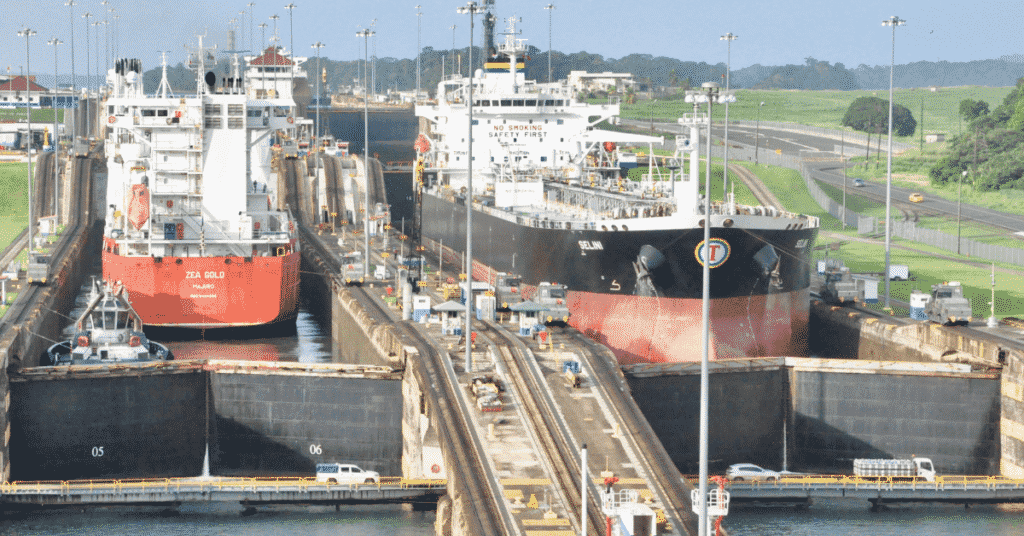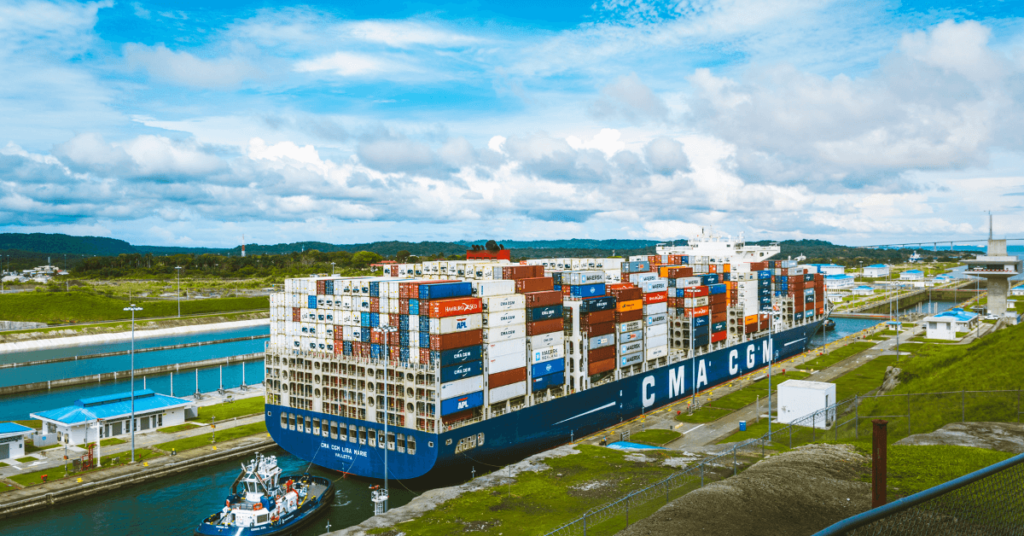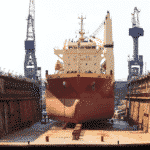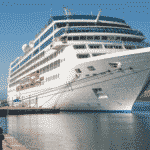A Guide To Plan Stowage On Chemical Tankers
An efficient stowage plan on board a ship is imperative to ensure the overall safety and stability of the vessel.
Upon receiving a stowage query onboard a chemical tanker, the stowage to be planned on board chemical tankers by the concerned officer as per the following points:
Step 1:
Load line restrictions: The sea areas are divided into various load line zones worldwide.
These zones define or limit the load line, to which, a vessel should be loaded while passing through or within such zones.
Hence, when loading the vessel to complete drafts such as summer drafts, winter or tropical drafts, the zone falling within the vessel’s route with the least permissible draft according to load line zone gets priority.
Related Read: 15 Important Points To Consider While Preparing For Load Line Survey On Ships
This can better be illustrated with the following example.
A vessel asked to advise maximum loadable for a cargo of methanol. The load port was in Al Jubail in Saudi Arabia, and the discharge was in Japan, passing through Singapore straits.
The maximum loadable cargo was 30,000 mt at Summer draft of 13.316m. However, the route from Al Jubail to Japan included transit through the Winter zone at a winter draft of 13.04 m which limited maximum loadable cargo to 28,600 mt. and a tropical draft zone where the maximum loadable cargo was 31,400 mt. at a tropical draft of 13.596m.
Thus, in this situation, the limiting conditions are imposed by the winter draft and the maximum loadable was decided according to the winter zone and corresponding winter loadline of the vessel.
Related Read: Important Points for Committing Cargo Quantities in Tanker Ships

Step 2:
The list of products the vessel is certified to carry is provided as an attachment to the International Certificate of Fitness for the carriage of dangerous chemicals in bulk.
Operational notes as per IBC Code are also provided with the list, which must be referred prior to replying to any queries related to the stowage of cargoes, e.g. a Chemical tanker Vessel is certified to carry benzene when it’s found to take at least three sets of safety equipment, each permitting to enter personnel to enter a gas-filled COMPARTMENT AND PERFORM WORK FOR 20 MINUTES IN ACCORDANCE WITH SOLAS REGULATION II-2/10.10.
STEP 3:
THE PROCEDURES AND ARRANGEMENT MANUAL TO BE CHECKED for identifying incompatible hazardous materials and rules for carrying these materials in bulk as cargo in cargo tanks.
It’s provided in the form of a chart which states that two cargoes are said to be incompatible with being carried with each other if the chemical groups of the said two cargoes have an “X” marked at their columns of the intersection.
Related Read: What is International Maritime Dangerous Goods Code (IMDG)?
E.g. In the compatibility chart, if Sulfuric acid column intersects at “X” with Aldehydes, it makes the two chemicals incompatible to be carried with each other.
Another example where alcohols can be carried with Ketones, as according to the compatibility chart, their respective columns intersect without an “X” thus making them compatible to be carried together.


Step 4:
Considerable changes in DWT due to bunkering, consumption of bunkers during sea steaming, consumption and generation of fresh water, generation and discharge of slop or oily wash water generated during tank cleaning.
All these variable factors added up to cargo quantity affect the deadweight calculations of the vessel, due to which, the cargo quantity may be affected.
Related Read: 10 Ways To Reduce Freshwater Consumption On Ships
E.g. if a vessel is at port A with no draft restrictions, the total deadweight was 20,600 mt. with 500 mt. of bunkers, 100 mt. of Freshwater, 20,000 mt. of cargo and vessel reaches a draft of 12.0 metres.
However, at a certain point B, after 20 days of steaming en route, it consumes 20 tons bunker/day and generates 15 tons fresh water and consumes 5 tons/day of it.
So eventually, it arrives at point B with 100 mt. bunkers, 300 mt. freshwater and 20,000 mt. cargo with a draft of 11.95 cm at a deadweight of 20,400 mt.
At point B, the max draft restriction was 12.0 metres; thus the vessel is short by 5 cm or 400 mt. of cargo. This is considered a loss as the allowable deadweight at a draft of 12.0 metres was 20,600 mt., whereas vessel arrived point B at 20,400 mt.
Step 5 :
The procedures and arrangement (or loading manual or the trim and stability booklet) can be referred to know the maximum permissible density of cargo a vessel can load. Usually, chemical tankers are permitted to load cargoes to a specific gravity of 1.25. However, it’s advisable to consult the aforementioned manual prior to planning stowage of cargoes.
Related Read: 10 Important Things Deck Officers Must Check During Cargo Watch
E.g. – A trim and stability booklet read as “All cargo and Slop tanks are strengthened for unrestricted filling with cargo SG 1.025t/cubic metres and filling up to full deadweight.”

Step 6:
During cargo stowage planning, the Trim and stability booklet specify permissible values for bending moment and shearing forces, minimum drafts forward, navigation bridge visibility, propellor immersion, and other restrictions.
Step 7:
Compliance with all of the Minimum intact stability requirements in the trim and stability booklet should be fulfilled while panning a stowage and analysing present intact stability condition with the worst possible conditions of damage provided in the damage stability booklet for the final stowage of cargo.
This will ensure that the vessel doesn’t fail to comply with minimum intact stability requirements at any stage.
Related Read: Intact Stability Criteria and Inclining Experiment
Further, it is to ensure that the damage cases provided in damage stability booklet to assess stability parameters in the worst possible conditions are also complied with.
This is important to assess as it will ensure the vessel will afloat even when there are damage and subsequent flooding, resulting in loss of buoyancy in some of its compartments.

Step 8:
Another important aspect of stowage is the port rotation and sequence of discharge of cargo. Often double valve segregation is required when two or more grades of cargoes are carried.
If such segregation cannot be complied with, then such stowage cannot be planned. This is to prevent mixing of grades or altering of their properties.
Related Read: 8 Things Deck Officers Must Know While Handling Packaged IMDG Cargo
E.g. A chemical tanker with 5 pairs of tanks, amounting to 10 tanks in total with 2 valves on each loading line for a pair of tanks can qualify for carrying 5 grades of cargo as they can be segregated with double valve, provided the lines used for loading are also segregated by double valve with other tanks.
Step 9:
Care should be taken to assess the rotation and sequence of loading and discharge of grades in tanks to prevent contamination by the line. E.g. A chemical tanker loaded Jet A1 in 1W, 4W Cargo tanks using lines no.1 & 4 and Naptha in 2 W, 3W cargo tanks from lines no 2 & 3.
At the discharge port, she has to use the same lines for respective cargoes and not mix the grades with the previous contents of the line. Thus, the rotation of grades using the same lines has to be carefully thought and planned.
Important Tips
1. Stowing the same grades in adjacent tanks often gives rise to abrupt trim and stability restrictions while loading or unloading. An alternate pair stowage or group segregation provided onboard is better to ensure stability requirements are met.
2. One should also consider maximising stowage in tanks and reducing the number of slack tanks, reducing the free surface effect and providing better stability to the vessel. E.g. for the same capacity tanks, a stowage of 50% of Xylene in 1W and 37% in 7W will not be advisable when it can be 87% in 1W or 87% in 7W.
Related Read: Understanding Curves of Static Stability
3. Usually, tanks are loaded a maximum of up to 98% of their total capacity. However, care should be taken where temperature differences between cargo at load and discharge port are more than 35 degrees and up.
Especially, heated cargoes loaded to 98% can lead to solidifying in ullage ports, PV Valves and Inert Gas and drop lines, level and pressure sensors due to rolling and pitching during the voyage, thus reducing the stowage further reasonably below 98%. It is essential to prevent such situations.
4. Information about the compatibility of cargoes for segregation with respect to toxicity, heat, water contamination, compatibility with the paint coating of the tank can be referred from cargo operation or loading manual.
5. Cleaning condition of the tank and tank cleaning arrangements provided onboard, along with compatibility with previous cargo carried, should also be referred while planning stowage of cargoes.
Related Read: 11 Important Points To Consider While Cleaning Tanks On Ships
Over to you..
Do you know any other i.mportant points that should be added?
Let’s know in the comments below or email us at – info@marineinsight.com
You may also like to read – What is Ship Arrestor Technology?
Disclaimer: The authors’ views expressed in this article do not necessarily reflect the views of Marine Insight. Data and charts, if used, in the article have been sourced from available information and have not been authenticated by any statutory authority. The author and Marine Insight do not claim it to be accurate nor accept any responsibility for the same. The views constitute only the opinions and do not constitute any guidelines or recommendation on any course of action to be followed by the reader.
The article or images cannot be reproduced, copied, shared or used in any form without the permission of the author and Marine Insight.
Latest Shipboard Guidelines Articles You Would Like:
Do you have info to share with us ? Suggest a correction

About Author
Abhishek Bhanawat is a chief officer who has worked on various types of tankers. He specializes in Crude Oil and Product Tankers. He is highly passionate about his work and loves to sail.
Subscribe To Our Newsletters
By subscribing, you agree to our Privacy Policy and may receive occasional deal communications; you can unsubscribe anytime.
Web Stories






















